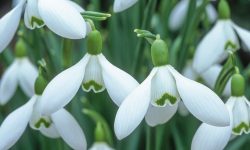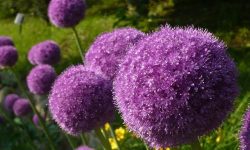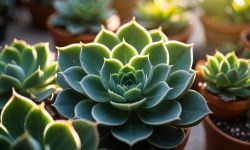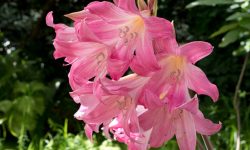Orchids are beautiful and exotic flowers that have captivated plant lovers for centuries. These popular houseplants come in many different colors, shapes, and sizes, and they’re relatively easy to care for. However, one of the most common questions about orchids is whether they’re acid-loving plants.
The answer may surprise you!
If you’re looking for a beautiful and unique flower to add to your garden, you may want to consider an orchid. Orchids are a great choice for acid-loving plants, as they thrive in slightly acidic soil.
While most plants prefer soil that is neutral or slightly alkaline, acid-loving plants such as azaleas, rhododendrons, and orchids do best in soil with a pH of 5.5 to 6.5.
If your soil is too alkaline, you can lower the pH by adding sulfur or pine needles. If it’s too acidic, you can raise the pH by adding limestone or wood ash.
Orchids require well-drained soil that is rich in organic matter.
They also prefer a humid environment, so misting them regularly will help keep them healthy and happy. When watering your orchids, be sure to use distilled water or rainwater instead of tap water, as the chemicals in tap water can damage the delicate flowers.
With proper care, your orchids will bloom beautifully year after year.
So if you’re looking for an interesting and exotic plant to add to your garden, be sure to give them a try!
Acid-Loving Plants List
An acid-loving plant is a plant that thrives in an environment with a pH level below 7.0. The term “acid-loving” can refer to both plants that prefer acidic soil and those that can tolerate it.
There are many different types of acid-loving plants, including both flowering and nonflowering varieties.
Some common acid-loving plants include azaleas, rhododendrons, camellias, hollies, and hydrangeas. These plants typically have deep green foliage and brightly colored flowers.
While most plants prefer neutral or slightly acidic soil, some plants actually require it in order to thrive.
Acidic soil helps to increase the availability of certain nutrients that these plants need in order to grow properly. In addition, acidic soils tend to be more water soluble, which means they drain better and are less likely to become waterlogged. This is especially important for root crops such as potatoes and carrots which need well-drained soil in order to avoid rot.
If you’re looking to add some color and life to your garden with acid-loving plants, here is a list of some great options:
Azaleas
Rhododendrons
Fertilizer for Acid Loving Plants
Acid-loving plants are those that prefer a pH level below 7.0. While most plants do best in neutral to slightly acidic soil, some, like azaleas, rhododendrons, and camellias, require a more acidic environment to thrive. If your soil is too alkaline, you can lower the pH by adding sulfur or other amendments to the soil.
You can also use fertilizer specifically designed for acid-loving plants.
When choosing a fertilizer for acid-loving plants, look for one that is labeled “slow release” or “low nitrogen.” This type of fertilizer will release nutrients slowly over time, which is ideal for these types of plants.
You should also make sure the fertilizer you choose has a high amount of phosphorus and potassium. These two nutrients are essential for plant growth and will help your acid-loving plants thrive.
List of Acid-Loving Plants And Vegetables
Acid-loving plants and vegetables are those that prefer soil with a lower pH. This list includes some of the most popular acid-loving plants, such as tomatoes, blueberries, raspberries, and potatoes.
While most plants prefer neutral to slightly acidic soil, there are a few that actually thrive in more acidic conditions. These acid-loving plants typically have brightly colored flowers or fruits, and they’re often used in landscaping because of their bold colors and interesting textures.
If you’re looking to add some acid-loving plants to your garden, here are a few of the most popular options:
Tomatoes: Tomatoes are one of the most popular vegetables around, and they’re also one of the best choices for an acidic garden. They prefer soil with a pH between 6.0 and 6.8, so if your soil is on the lower end of that range, tomatoes should be happy.
Just make sure you give them plenty of sun and water; too much moisture can lead to problems like blossom end rot.
Blueberries: Blueberries are another fruit that does well in acidic soils.
Miracle-Gro for Acid-Loving Plants
If you’re interested in Miracle-Gro for Acid-Loving Plants, you’ve come to the right place. Here, we’ll provide detailed information about this product, including what it is, how it works, and what benefits it can offer your acid-loving plants.
What Is Miracle-Gro For Acid-Loving Plants?
Miracle-Gro for Acid-Loving Plants is a fertilizer that has been specially formulated for use on acid-loving plants. These include plants such as rhododendrons, azaleas, camellias, and gardenias. The fertilizer contains a high percentage of sulfur and other nutrients that are ideal for these types of plants.
How Does It Work?
When applied to the soil around acid-loving plants, Miracle-Gro For Acid-Loving Plants helps to lower the pH level of the soil. This makes it more acidic, which is ideal for these types of plants.
The fertilizer also provides essential nutrients that help promote healthy growth and vibrant blooms.
What Are The Benefits?
There are many benefits to using Miracle Gro For Acid Loving Plants on your acid loving plants.
This fertilizer will help to ensure that your plants stay healthy and looking their best. Additionally, it can help encourage more abundant blooming and larger flowers. If you want your acid loving plants to thrive, this is an excellent option!
Acid-Loving Vegetables
Acid-loving vegetables are those that thrive in soil with a pH level below 7.0. These plants tend to be native to regions with high acidity levels in the soil, such as the eastern United States. Some common acid-loving vegetables include:
blueberries
raspberries
cranberries
potatoes
bell peppers
These plants require less fertilizer and pesticides than their neutral or alkaline counterparts, making them more sustainable to grow.
Additionally, they are often more resistant to disease and pests. Soil with a lower pH level also tends to be more dense, which helps these vegetables retain water better.

Credit: www.amazon.com
Do Orchids Like Acidic Or Alkaline Water?
Orchids like water that is slightly acidic to neutral. They do not like water that is too alkaline or too acidic. The ideal range of pH for orchids is between 6 and 7.5.
What Type of Fertilizer is the Best for Orchids?
When it comes to fertilizing orchids, there are a few things you need to keep in mind. First of all, orchids are epiphytic plants, which means that they grow on other plants or objects instead of in the ground. This means that they typically don’t need as much fertilizer as other plants.
In fact, too much fertilizer can actually be harmful to orchids.
The type of fertilizer you use is also important. Orchids need a balance of nutrients, so using a complete fertilizer with equal parts nitrogen, phosphorus and potassium is ideal.
You can find specially formulated orchid fertilizers at most garden centers or online.
As for how often to fertilize, a good rule of thumb is to do it every other time you water your orchids. If you notice that your plants are starting to yellow or wilt, however, they may be telling you that they need a little extra boost from some fertilizer.
Just be sure not to overdo it!
How Do You Acidify Water for Orchids?
If you want to acidify water for orchids, you can do so by using an acidic solution such as vinegar or lemon juice. Simply add a few drops of the acidic solution to your watering can and then fill it up with water as usual. This will lower the pH of the water and make it more acidic, which is ideal for most orchids.
Do Orchids Like Coffee Grounds?
It’s a common myth that coffee grounds are good for orchids. In reality, coffee grounds can actually harm your orchid plants. Coffee grounds can increase the acidity of the soil, which can damage the roots of your orchids.
Additionally, coffee grounds can attract pests and fungi, which can further damage your plants. If you’re looking to improve the health of your orchid plants, it’s best to avoid using coffee grounds altogether.
Do Asiatic Lilies and Orchids Require the Same Soil pH?
While asiatic lilies and orchids bring charm to any garden, their soil preferences differ. Asiatic lilies thrive in acidic soil, making the keyword asiatic lilies and acid soil an important consideration. Orchids, on the other hand, prefer neutral to slightly acidic soil, an essential factor to acknowledge when cultivating these beautifully delicate flowers.
How to feed your Acid Loving Plants
Conclusion
Orchids are plants that love acidic soil. This means that they thrive in soils with a pH level of 7 or below. Most gardeners recommend a soil mix for orchids that is 50% peat moss and 50% perlite.
This mixture provides the perfect balance of moisture and air circulation that orchids need to flourish.






